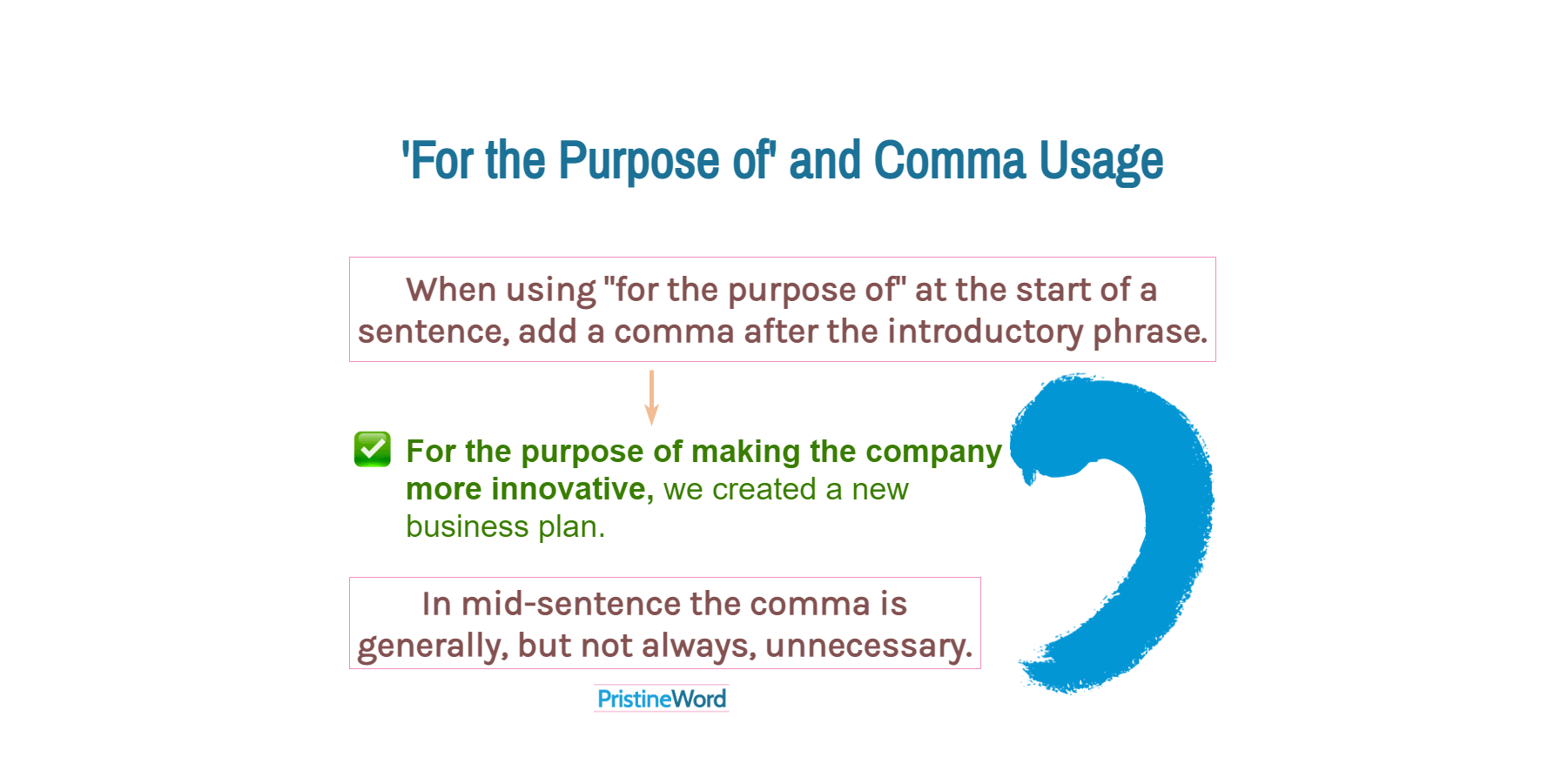When using "for the purpose of" at the start of a sentence, place a comma after the introductory phrase.
When using "for the purpose of" at the start of a sentence, place a comma after the introductory phrase.
For the purpose of making the company more innovative, we created a new business plan.
For the purpose of making the company more innovative we created a new business plan.
Follow the same convention with the prepositional phrase "with the purpose of", which has the same meaning and is used in the same way.
With the purpose of carrying out the attack, the enemy decided to advance into the mountains.
In the middle of a sentence, the comma is usually, but not always, unnecessary.
They created a new strategy for the purpose of improving business performance.
There are particular sentence constructions, however, where commas are needed. For example, use them to clarify the meaning of your sentence, signal an interruption, or create a parenthetical feel:
Jessica created an action plan, for the purpose of improving her profit margins, and launched a new product last month.
Note the comma after "margins" in the example above. Some writers forget to put this important comma, also called an appositive comma. At the end of a sentence, a period replaces the closing comma.
Additionally, use commas to separate a series of gerunds or prepositional phrases after "for the purpose of" or "with the purpose of".
Charles decided to learn new skills for the purpose of researching new job options, trying out a new career field, and gaining confidence.
Follow the same comma strategy with these compound prepositions:

